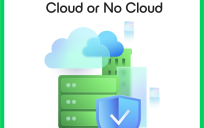It’s easy to think of government as being just a few innovative ideas and influential leaders away from technology transformation. But truthfully, IT modernization can’t happen overnight.
Government IT is siloed, budget-constrained and subject to members of leadership and workforces who might resist changes in their day-to-day. And while everybody is looking for a panacea to government’s age-old troubles with inefficiency and obstacles, maybe a better approach is accepting organizational constraints. From there, just look for the best solution.
GovLoop hosted a training Thursday, “Government Innovation: Making the Mission Possible” that addressed how government can achieve big wins along mission lines considering the challenges that it faces. Speaking on the webinar were Marina Fox, DotGov Domain Services Program Manager at the General Services Administration (GSA), and Nali Giliana, AVP of Omni and Internet of Things (IoT) Solutions for Adobe.
In 2012, GSA was tasked with analyzing thousands of federal, front-facing web domains in one place for the Digital Analytics Program. An unprecedented undertaking, at the time no one even knew how many websites were a part of the federal government, Fox said.
Furthermore, the solution needed was so specific that a significant amount of acquisitions legwork took hold before establishing the program. Market research, which took seven months, decided that commercial off-the shelf (COTS) was the best approach, and two full-timers spent six months deciding on the right solution for the Digital Analytics Program.
“In general, procurement time is often a deterrent to innovation,” Fox said, noting apprehension about picking out a COTS solution.
GSA found the program was worth the wait. Citing reliability and scalability, the procurement yielded a product that could solve 85 to 90 percent of use cases.
Still, in other cases, Fox opted for an open source approach to technology development. Struggling to implement and track the compliance of Section 508 IT accessibility laws and standards, GSA moved to artificial intelligence to review solicitations.
Non-compliant solicitations received email alerts issuing corrections. As the project was one designed to streamline processes, although not federally mandated, open source development was the way to go.
After seeing through both processes, Fox developed a methodology for deciding whether open source or COTS worked best.
COTS could fit business cases for wide-ranging projects that need immediate implementation and no extra costs. Open source, however, could be better for adaptable programs with less up-front budgets and staff.
Contrary to common belief, Fox emphasized that open source projects aren’t always cheap and that COTS solutions could be surprisingly affordable.
She targeted Agile development as a key to successful programs, no matter what the acquisition model.
“When you’re working in this innovative sort of environment, you don’t have time for procurement,” Fox said. “You have to go fast, you have to build momentum, before you lose people’s attention.”
To truly work as imagined, government projects depended on reliable and consistent data streams, as well.
“Content without data is not that smart, and it also makes the experience suffer,” Giliana said.
The end product of effective government projects often requires content generation and management, an area where COTS products can be affordable and scalable. COTS products have in fact widely developed to suit the needs of a variety of interests.
Furthermore, COTS technologies have been able to adopt iterative and novel technologies, such as AI. Previously, AI was often thought of as a tenet of open source development.
“The modern way of this environment is to basically create experiences that are packaged and delivered based on the customer that is requesting them,” Giliana said. “And that is mostly done through AI.”
Most important, however, was that projects offer business value, and produce a visible result, forging a closer citizen connection. Both Fox and Giliana stressed that mission should serve as a driver, and that citizen connection is key. Modern technology can make these aims attainable when the right solution is found, bridging the gap between government and a segmented population.
“We really were driven by the need to continue the mission of the government,” Fox said.






Leave a Reply
You must be logged in to post a comment.